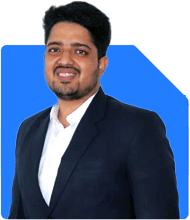Ramalingam Kalirajan |10870 Answers |Ask -Follow
Mutual Funds, Financial Planning Expert - Answered on May 08, 2024
He has an MBA in finance from the University of Madras and is a certified financial planner.
He is the director and chief financial planner at Holistic Investment, a Chennai-based firm that offers financial planning and wealth management advice.... more

I am 42 years old and have been investing in SIPs since 2009 when i was 31 YO. My SIP include in 2 mid cap fund (Sundaram Midcap and HDFC Midcap Opportunities) of 4k, 2k in IDFC Flexi cap, 2k in Axis Small Cap, 1k in ABSLI ELSS. Periodic LUMPSUM investments. My investment horizon is till 60 yrs. Please suggest if its good enough or i need to review and add.
1. Review Existing Portfolio: Evaluate the performance of your current SIPs against relevant benchmarks and peer funds. Ensure that the funds you've chosen have consistently delivered satisfactory returns and align with your risk profile and investment goals.
2. Diversification: While mid-cap and flexi-cap funds offer growth potential, consider diversifying your portfolio further. Include large-cap funds for stability and exposure to blue-chip companies. Additionally, explore thematic or sectoral funds to capitalize on emerging trends or sectors poised for growth.
3. Risk Management: Given your investment horizon until the age of 60, it's crucial to strike a balance between growth and stability. Allocate a portion of your portfolio to debt funds or hybrid funds to mitigate volatility and preserve capital, especially as you approach retirement age.
4. Regular Review: Periodically review your portfolio's performance and make necessary adjustments based on changing market dynamics, fund performance, and your evolving financial goals. Rebalance your portfolio if required to maintain your desired asset allocation.
5. Professional Guidance: Consider consulting with a Certified Financial Planner to assess your current financial situation, align your investment strategy with your long-term goals, and make informed decisions about portfolio optimization and asset allocation.
6. Asset Allocation: Ensure your asset allocation is in line with your risk tolerance and investment horizon. As you approach retirement age, gradually shift towards a more conservative allocation to safeguard your accumulated wealth.
7. Emergency Fund: While focusing on long-term investments, don't forget to maintain an adequate emergency fund to cover unforeseen expenses or financial emergencies without disrupting your investment portfolio.
Overall, your investment approach appears sound, but periodic reviews and adjustments may be necessary to ensure your portfolio remains optimized for achieving your long-term financial objectives.
You may like to see similar questions and answers below
Nikunj Saraf | Answer |Ask -Follow
Mutual Funds Expert - Answered on Mar 29, 2023
Ramalingam Kalirajan |10870 Answers |Ask -Follow
Mutual Funds, Financial Planning Expert - Answered on May 14, 2024
Ramalingam Kalirajan |10870 Answers |Ask -Follow
Mutual Funds, Financial Planning Expert - Answered on May 25, 2024
Ramalingam Kalirajan |10870 Answers |Ask -Follow
Mutual Funds, Financial Planning Expert - Answered on Jul 14, 2024
Ramalingam Kalirajan |10870 Answers |Ask -Follow
Mutual Funds, Financial Planning Expert - Answered on Dec 28, 2024
Dr Dipankar Dutta |1837 Answers |Ask -Follow
Tech Careers and Skill Development Expert - Answered on Dec 05, 2025
Dr Shyam Jamalabad |108 Answers |Ask -Follow
Dentist - Answered on Dec 05, 2025
Dr Shyam Jamalabad |108 Answers |Ask -Follow
Dentist - Answered on Dec 05, 2025
Dr Shyam Jamalabad |108 Answers |Ask -Follow
Dentist - Answered on Dec 05, 2025
Dr Dipankar Dutta |1837 Answers |Ask -Follow
Tech Careers and Skill Development Expert - Answered on Dec 05, 2025
Ulhas Joshi |280 Answers |Ask -Follow
Mutual Fund Expert - Answered on Dec 05, 2025
Dr Dipankar Dutta |1837 Answers |Ask -Follow
Tech Careers and Skill Development Expert - Answered on Dec 04, 2025
Ravi Mittal |676 Answers |Ask -Follow
Dating, Relationships Expert - Answered on Dec 04, 2025
Anu Krishna |1745 Answers |Ask -Follow
Relationships Expert, Mind Coach - Answered on Dec 04, 2025
Anu Krishna |1745 Answers |Ask -Follow
Relationships Expert, Mind Coach - Answered on Dec 04, 2025


























